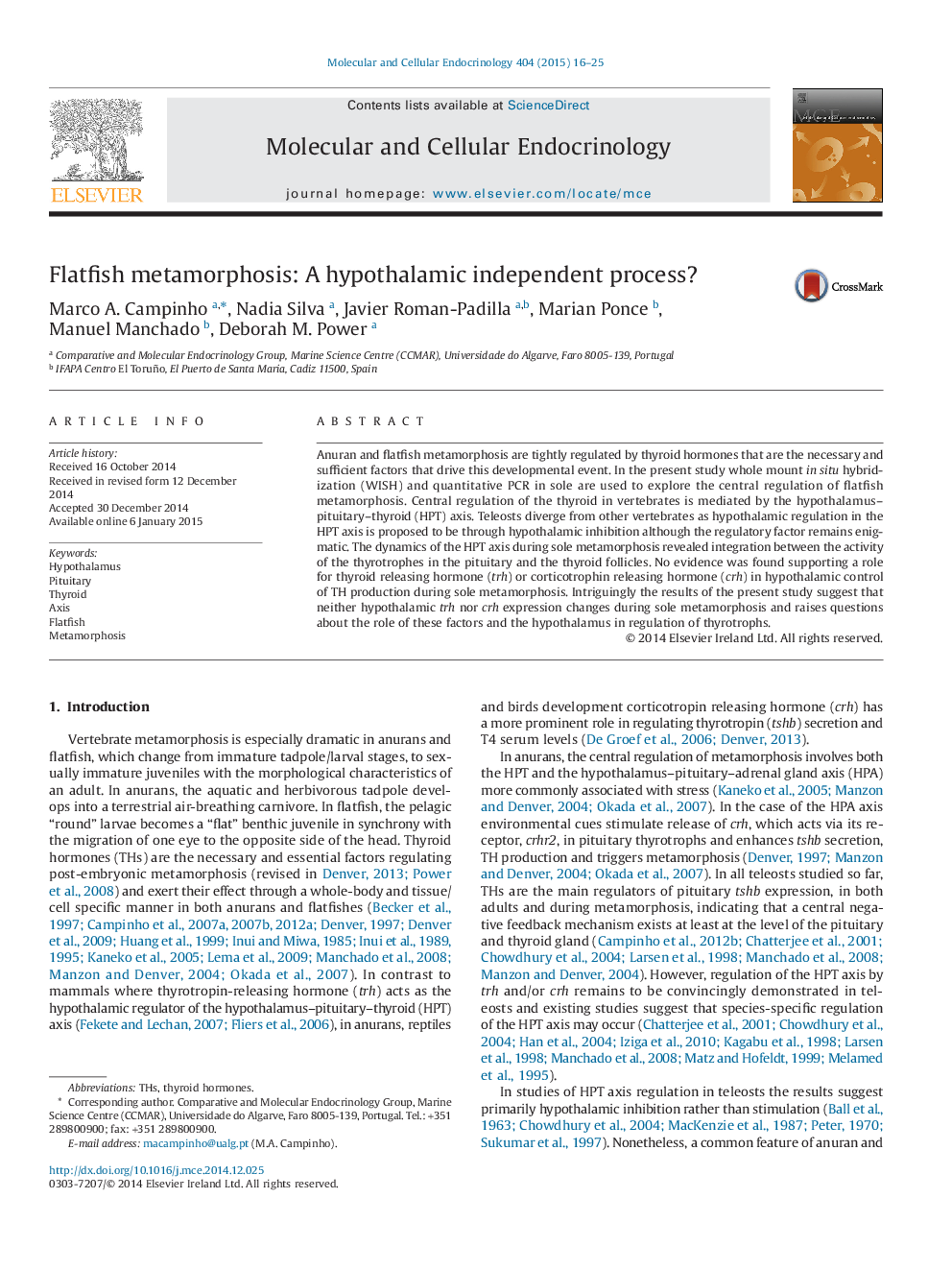| Article ID | Journal | Published Year | Pages | File Type |
|---|---|---|---|---|
| 2195881 | Molecular and Cellular Endocrinology | 2015 | 10 Pages |
•Increase expression of tshb is not due to increase thyrotrophs but instead increase activity of already present thyrotrophs.•The pituitary and thyroid tissues are the major endocrine compartments regulating sole metamorphosis.•The hypothalamic factors trh and crh do not seem involved in regulating sole metamorphosis.
Anuran and flatfish metamorphosis are tightly regulated by thyroid hormones that are the necessary and sufficient factors that drive this developmental event. In the present study whole mount in situ hybridization (WISH) and quantitative PCR in sole are used to explore the central regulation of flatfish metamorphosis. Central regulation of the thyroid in vertebrates is mediated by the hypothalamus–pituitary–thyroid (HPT) axis. Teleosts diverge from other vertebrates as hypothalamic regulation in the HPT axis is proposed to be through hypothalamic inhibition although the regulatory factor remains enigmatic. The dynamics of the HPT axis during sole metamorphosis revealed integration between the activity of the thyrotrophes in the pituitary and the thyroid follicles. No evidence was found supporting a role for thyroid releasing hormone (trh) or corticotrophin releasing hormone (crh) in hypothalamic control of TH production during sole metamorphosis. Intriguingly the results of the present study suggest that neither hypothalamic trh nor crh expression changes during sole metamorphosis and raises questions about the role of these factors and the hypothalamus in regulation of thyrotrophs.
